
As consumers demand fresher, more visually appealing food products, packaging continues to be an integral part of the purchasing decision. Food manufacturers are tasked with protecting product quality, meeting strict food safety regulations, and winning consumer attention on crowded store shelves.
Clamshell packaging is a top choice for fresh foods, bakery items, produce, and deli products because it’s clear, durable, and resealable. But packaging alone is not enough. Without the right equipment and processes, clamshell lines can quickly become sources of inefficiency, product waste, or compliance issues.
An optimized clamshell packaging line integrates protective packaging, smart labeling solutions, and automation equipment to improve speed, accuracy, and food safety. Here’s how you can elevate your operation with best practices and the right tools.
Clamshell Packaging 101: What It Is and How It’s Used
Clamshell packaging refers to rigid, hinged containers, typically made from clear plastic, that securely enclose a product without obstructing visibility. These containers are designed to protect food items while showcasing their quality, making them a favorite in many areas of food manufacturing.
They’re commonly used for fresh berries and produce, baked goods, prepared salads and meals, and deli meats and cheeses. Their sturdy design protects delicate foods during transport and handling, helping maintain product integrity until it reaches the customer.
These containers provide tamper-evident security, preserve product freshness, and offer strong shelf appeal thanks to their clear, attractive presentation. Retailers appreciate clamshells for their stackability and space efficiency, while consumers enjoy the convenience of resealable containers that keep food fresher for longer.
Whether you're selling a handful of strawberries or a full prepared meal, clamshells offer a packaging solution that balances durability, functionality, and visual appeal, a win for both manufacturers and buyers.
Learn more about using clamshell protective packaging for food products.
The Benefits of Clamshell Packaging for Fresh Foods
Choosing the right packaging can directly impact your product’s shelf life and market success. Clamshell containers are designed to preserve food freshness by protecting against contamination, handling damage, and moisture loss, ensuring products maintain their quality from production to the consumer’s table.
Their clear, rigid design also enhances product visibility, allowing customers to see the food’s freshness and quality without needing to open the clamshell package. This transparency builds trust and helps products stand out on increasingly competitive retail shelves.
Clamshells also offer more sustainable options. Many manufacturers are now using recyclable PET plastics, making clamshells a smarter choice for brands focused on environmental responsibility without sacrificing durability.
Clamshell packaging is cost-effective compared to rigid cartons or multi-material packaging, offering a balance between protection, shelf appeal, and price. Their resealable features add convenience for consumers and can encourage repeat use, further extending the product’s perceived value.
Discover the top 5 benefits of using a clamshell package for fresh foods.
Labeling Your Plastic Clamshell Packaging for Maximum Efficiency
While clamshell containers protect and display your product, the label communicates everything your customer needs to know—from branding and nutritional facts to safety warnings and compliance details. A clear, accurate label builds trust with consumers and ensures your products meet strict industry regulations.

Precise, FDA-compliant labeling is critical for both legal requirements and consumer confidence. Missing allergen information or incorrect expiration dates can lead to serious consequences, including fines, recalls, or damaged brand reputation. Yet, applying labels manually can be slow, error-prone, and inconsistent, especially as production volumes grow.
Automated labeling solutions solve these challenges by delivering:
- Accurate, consistent label placement that gives every clamshell package a clean, professional look and strengthens your brand image on the shelf.
- Compliance with food industry regulations, properly displaying ingredient lists, allergen warnings, nutritional information, and expiration dates where they need to be.
- Efficient changeovers between SKUs, seasonal items, or special promotions, helping your team adapt quickly without losing production time.
By investing in the right labeling equipment, you’ll boost your packaging speed, reduce human error, and protect your brand’s reputation in an increasingly competitive market. Better labeling means better first impressions and better long-term customer loyalty.
See our best practices for labeling plastic clamshell packaging.
How Denester Machines Improve Your Packaging Line
Before filling and labeling, every clamshell container must be separated and positioned properly on the production line. Manual denesting slows down production, increases labor demands, and raises the risk of contamination from human contact, especially critical in food manufacturing environments where hygiene is non-negotiable.

Denester machines automate this repetitive and often overlooked task by:
- Separating and placing clamshell containers consistently onto conveyors, ensuring a steady, reliable flow that keeps your line moving efficiently.
- Reducing labor costs by minimizing the need for manual intervention, freeing up operators to focus on higher-value tasks like quality control.
- Supporting food safety by limiting human handling of food-contact surfaces, helping manufacturers maintain compliance with FDA and USDA standards.
Incorporating a denester into your packaging line speeds up production, improves consistency, and reduces the chance of errors, such as misaligned containers or production stoppages.
Choosing the right denester, based on your container size, material, and production volume, ensures a seamless, sanitary start to your clamshell packaging process and sets the tone for greater line efficiency overall.
Read more about how the right denester machine can boost your packaging line.
The Essential Equipment for Efficient Clamshell Packaging
A high-performing clamshell line isn’t built with a single machine, it’s an integrated system where each piece of equipment plays a critical role. To maximize speed, minimize waste, and maintain product quality, your line should include:

Fillers: Ensure precise portioning for fruits, baked goods, deli items, and other fresh foods. Accurate filling reduces product waste, maintains consistency across clamshell packages, and helps you meet regulatory weight standards, all while speeding up production.
Denesters: Automate the separation and placement of clamshell containers, improving efficiency, hygiene, and line consistency. Denesters eliminate the variability and contamination risks that come with manual handling, giving your packaging line a stronger start.
Labeling Equipment: Apply compliant, eye-catching labels at high speeds, ensuring your product is both retail-ready and properly branded. Automated labelers also help you stay on top of regulatory requirements by accurately displaying ingredient lists, allergen warnings, and expiration dates.
Conveyors: Maintain a smooth, steady transition between equipment to avoid bottlenecks and keep production flowing. A well-designed conveyor system supports consistent line speed and minimizes product damage, making sure every clamshell package moves efficiently through each stage.
When these systems work together as a cohesive unit, your operation gains the speed, accuracy, flexibility, and scalability needed to stay competitive. A fully optimized clamshell line doesn’t just meet today's needs; it positions your business for future growth.
Explore equipment options for an efficient plastic clamshell packaging line.
Build a Smarter Clamshell Packaging Line
Clamshell packaging offers fresh food manufacturers a solution for protecting products, showcasing quality, and enhancing the customer experience. But without the right equipment and processes in place, inefficiencies can creep in, leading to waste, compliance risks, and missed opportunities.
By combining high-quality clamshell packaging, automated labeling, efficient filling, and smart workflow integration, you can build a packaging line that keeps products fresh, meets regulatory demands, and drives operational success.
Ready to optimize your clamshell packaging line? Explore our full range of food packaging solutions and download our Industry Guide to Evaluating Labeling Fresh Food Containers to get started.
.webp?width=200&height=114&name=2x-Packleader-logo-large%20(1).webp)

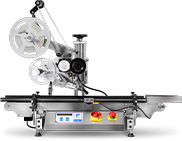
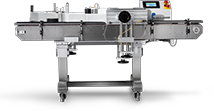
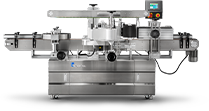
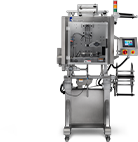
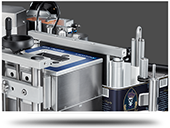
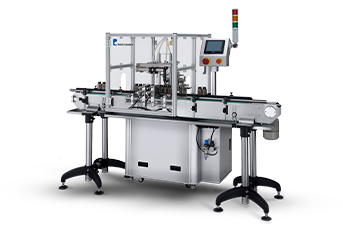
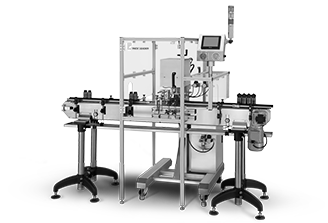
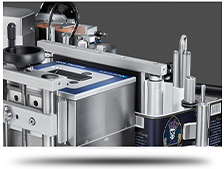






.webp?width=360&name=2x-color-logo%20(1).webp)